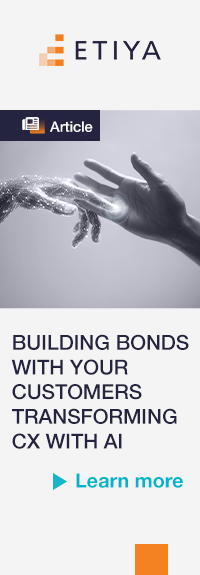Cutting Cloud Complexity with AI Automation

The concept of cloud has been around for a while, but it’s becoming a bit complicated. IBM actually launched the first virtual storage operating system for mainframes as far back as the 1970s. But the potential to enable remote functions, eliminate the need to deploy and manage on-premise hardware and software, and the potential to access—and pay for—on-demand resources only when you need them, really kicked things off around the turn of the century. By 1999, Salesforce.com launched with its “no software” motto and by 2010, Microsoft jumped onto the cloud bandwagon with its cloud-based Office 365 suite.
Since then, the rush to cloud has been a bit of a frenzy. Cloud adoption has been fueled by an exponentially expanding range of applications, trends, and emerging technologies, such as edge networking, containerization, cloud computing, memory, and storage; network functions virtualization (NFV), a host of software-as-a-service (SaaS) offerings, and more. In 2020, the global COVID-19 pandemic threw more fuel on the cloud fire as the developed world almost instantly transformed to digital-first, and trends like ecommerce, remote work, and virtual healthcare exploded.
Today, more and more applications, functions and resources are being offloaded to the cloud and shipping software has become all but extinct. According to Gartner, over 85 percent of enterprises will embrace a cloud-first stance by 2025, with 95 percent of new digital workloads deployed on cloud-native platforms—a 300 percent increase over 2021. In fact, Gartner’s Distinguished VP Milind Govekar remarked, “there is no business strategy without a cloud strategy,” citing applications across a variety of industries. But as with any transformative technology, it just might not be that simple.
Managing cloud complexity
When it comes to the cloud, it’s not all silver linings. There are many challenges with the management of multiple clouds and hybrid cloud solutions, particularly when cloud operations differ greatly between cloud providers such as AWS, Azure, and Google. Certifications and expertise don’t necessarily or easily transfer.
IBM Downloads
-
IBM Feature: Private 5G
-
IBM Feature: MWC 2023
- IBM Video: Mobility Solutions
-
IBM
Video: Quantum Networks
Web Links
-
IBM Solution: AI and IT Automation
- IBM Solution: Network Automation
-
IBM News: Showcasing Network Automation
-
IBM Podcast: Software-defined Networking
-
IBM Feature: Quantum-safe Networks
About IBM - www.ibm.com
IBM is the global leader in business transformation through an open hybrid cloud platform and Al, serving clients in more than 170 countries around the world. Today 47 of the
Fortune 50 Companies rely on the IBM Cloud to run their business, and IBM Watson enterprise Al is hard at work in more than 30,000 engagements. IBM is also one of the world's most
vital corporate research organizations, with 28 consecutive years of patent leadership. Above all, guided by principles for trust and transparency and support for a more inclusive
society, IBM is committed to being a responsible technology innovator and a force for good in the world. For more information about IBM visit: www.ibm.com
Also, in a somewhat ironic twist, there’s an emerging “bill shock” component to cloud management. Historically, bill shock has referred to service providers’ customers being surprised by large bills and unexpected charges. Today, service providers are experiencing a similar surprise when they receive bills from their cloud providers, as they continue to offload large swaths of network and application functions to the cloud. Enterprises are no exception as they spin up cloud resources, and may later lose visibility of them. The cloud management cost crunch is only exacerbated further, as organizations of all kinds are feeling intense pressure as they face the possibility of a looming global recession.
The complexity of managing cloud resources only grows as enterprises and service providers also contend with a loss of data visibility and limits to application functionality. Cloud-data visibility is critical as regulatory concerns around data privacy and storage, such as GDPR, are an increasing concern, and limits to visibility and application performance can cause customer friction with significant business implications. For example, when business applications don’t work, it can cause cascading cost implications. Internally, organizations must troubleshoot their cloud instances and functions and externally, enterprise-application customers contact call centers with performance issues, which can lead to churn.



















